Introduction
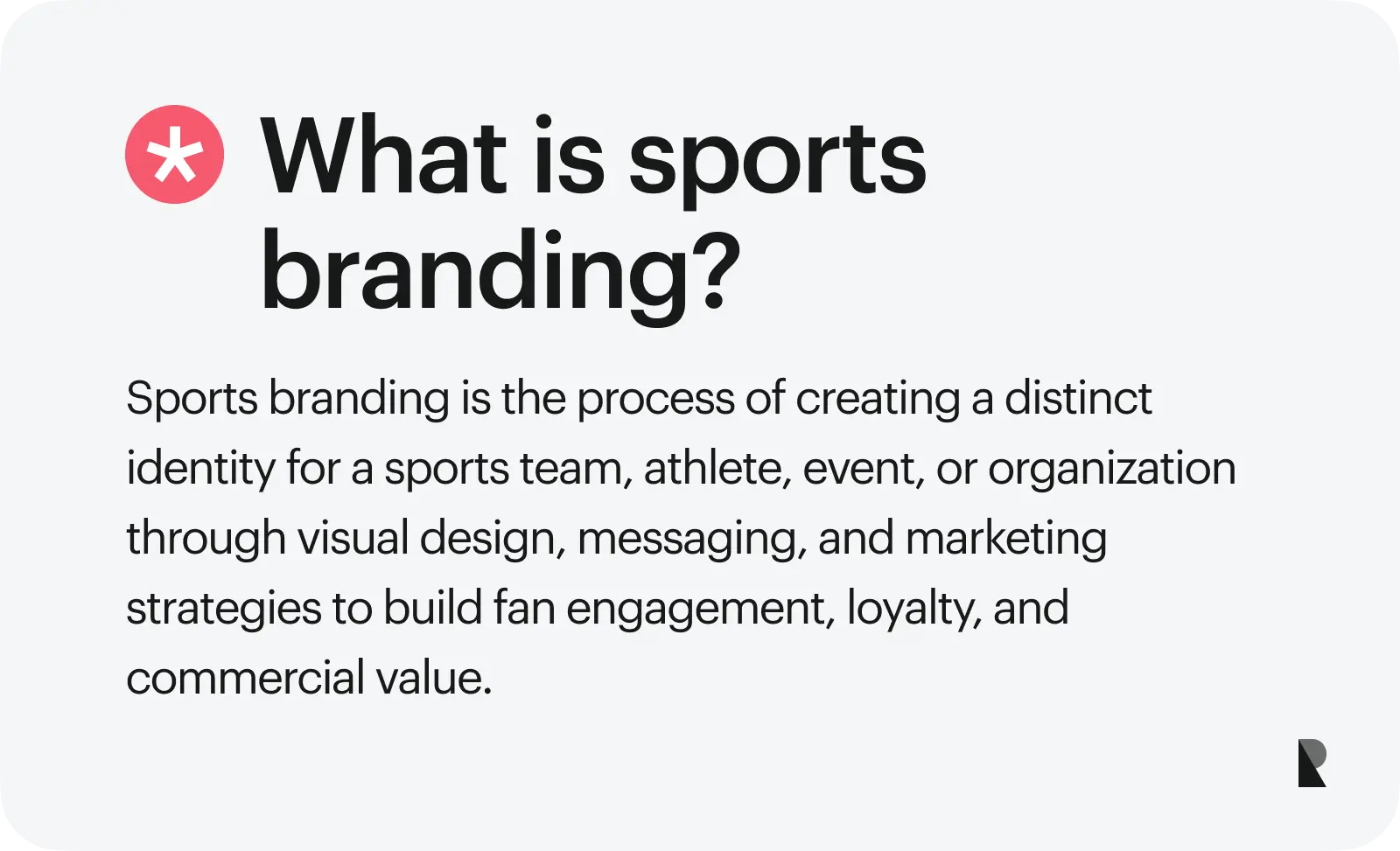
The global sports industry is vast and comprises several sports markets. Because of the rising demand among fans and consumers, sports apparel, equipment, sports teams, and e-sports compete for attention. As profits grow, the industry has also experienced an influx of investment.
So, how can you cater to the diverse needs of your audience and get ahead of the competition? Through successful sports branding. Here's everything you need to know to optimize your strategy and achieve results.
What is Sports Branding?
Sports branding is about creating an identity that fans and supporters can rally behind. Think of your favorite sports teams, sports accessories, equipment, and sportswear with logos, branded merchandise, and slogans that make them stand out.
You can breathe life into your brand by adding personality, style, emotions, and meaningful messages your target audience can connect with. A seasoned brand identity creative agency helps codify that personality into repeatable assets: logos, kits, mascots, and voice. So the brand performs on and off the field.
Branding in the sports arena is different than others. It relies heavily on the team spirit inherent in the industry. Add consistency and commitment to brand development, and you can enjoy decades of support and fame.
Elements of a Sports Branding Strategy
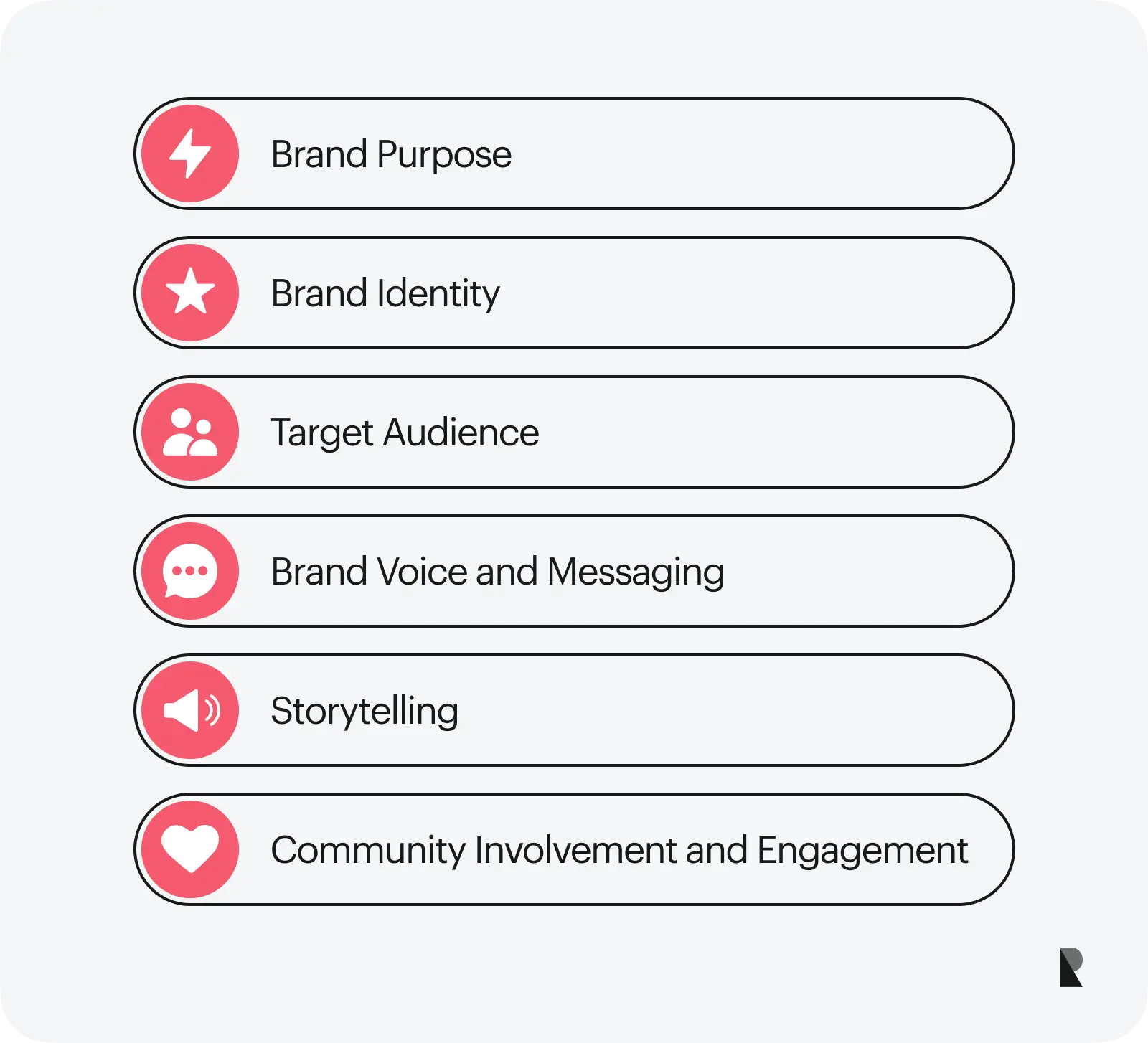
Before crafting a compelling sports branding strategy, you must know what goes into it. These elements include your brand purpose, identity, target audience, voice, and storytelling.
Brand Purpose
Brand purpose is the reason for existence beyond making money. It articulates the brand's mission, vision, and goals in one statement and serves as the guiding light for every decision. Not to be confused with a slogan or a tagline, a brand purpose is akin to a declaration of your commitment to your consumers and fanbase.
Brand Identity
A killer brand identity is vital to a branding strategy, especially in sports. Your brand or team logo design, color palette, typography, and other visual assets in your brand system make your sports brand recognizable and different from other brands. For instance, the New York Yankees' logo is so iconic that it has become a part of the city's charm, history, and culture.
Aside from logos, sports fans quote powerful and inspiring slogans like Adidas' 'Impossible is Nothing.' Slogans from sports brands have become so catchy that they can be found on merchandise like shirts, bags, and stickers.
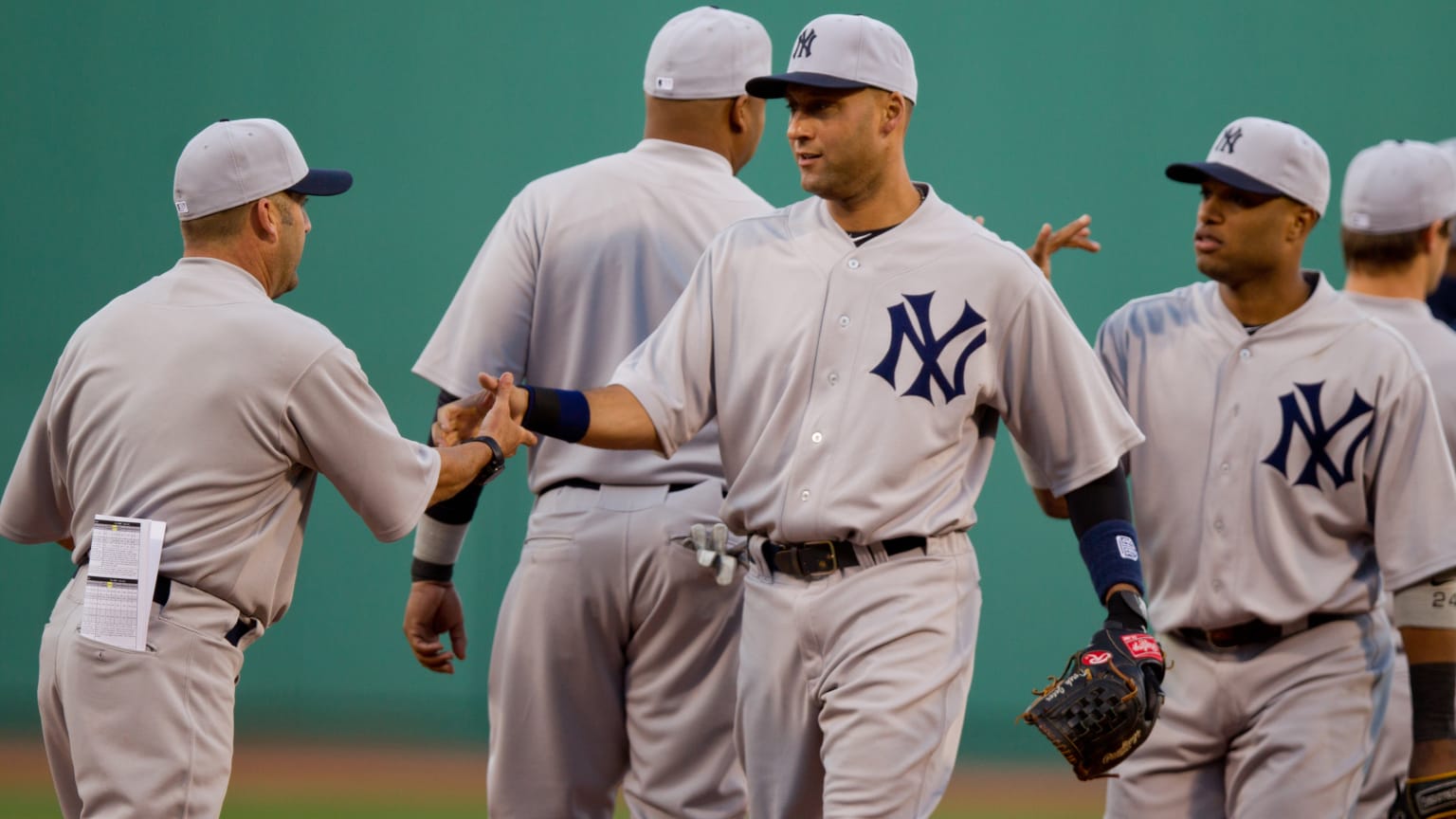
The New York Yankees insignia has become an iconic symbol in baseball history. Image via MLB
Mascots are a massive deal in the world of sports, too! Like Mickey Mouse, they help humanize your brand by adding a memorable character your audience can connect with. For example, the baseball team Philadelphia Phillies has its green furry friend, Phillie Phanatic, that everyone loves.
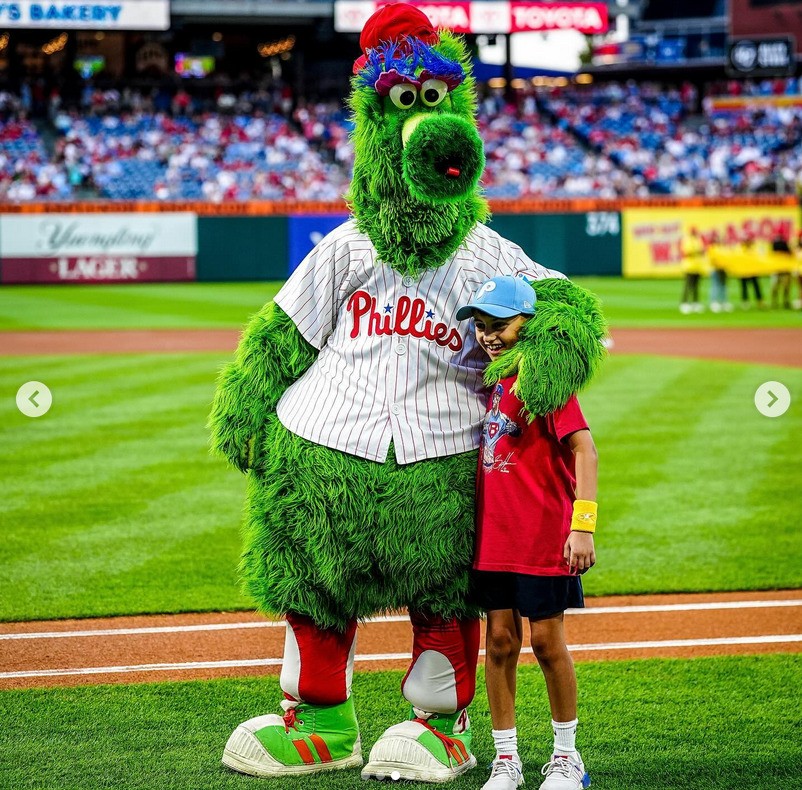
Phillie Phanatic brings joy to every Phillies fan. Image via Instagram
But, of course, shaping your visual identity goes beyond pretty designs. Crafting a winning brand identity boils down to how well you know and understand your target audience.
Target Audience
Your target audience refers to a segment of the market you wish your brand to appeal to. By intimately knowing and understanding your target audience, you can create a branding strategy that piques their interest and motivates them to take action and purchase from you.
Knowing your target audience involves multiple steps, beginning with market research to ascertain the demographics and psychographics. Here, you gather information about what your potential customers want and need. Dig deep and learn their interests, demands, and expectations. This also entails gathering feedback and mastering consumer behavior. You can talk to your competitors' customers and discover gaps your brand can fill.
As your brand evolves, so does your target audience, and vice versa.
Brand Voice and Messaging
Brand voice combines tone, voice, and language to relay a message or communicate with its audience. It evokes an emotional connection between the brand and its audience by encouraging engagement.
Some sports brands like Puma use a fun, energetic, and motivating voice to engage a younger audience. Others, like Nike, go for a more serious tone that's performance-focused and inspirational. If you want to stand out, you can use humor.
Establishing brand voice and messaging requires a deep understanding of your audience, apparent brand traits, and a defined style guideline. Together, they create a consistent identity that resonates with customers.
Storytelling
Customers are more receptive and engaged when sports team branding uses stories to communicate its messaging. Good stories evoke joy, excitement, nostalgia, and even sadness. As such, your brand's audience is likely to remember and feel closer to it.
For successful storytelling, you must consider applicable techniques and the impact of sports cultures. Brands and sporting events highlight athletes' cultural and social implications in campaigns, such as those of Simone Biles and Cristiano Ronaldo in the Olympics.
While these cultural and social nuances may seem irrelevant, they are significant in reaching your audience and ultimately driving engagement and loyalty. In addition to consistent visuals and messaging, they make your brand accessible, relatable, and authentic.
Community Involvement and Engagement
Speaking of cultural impact, community involvement and engagement are also crucial to a sports branding strategy. When people see a sports brand spearheading community initiatives, like health and wellness programs, they demonstrate how much they care about people.
This display of social responsibility boosts a brand's image and attracts potential partners and sponsors. For instance, Puma partnered with environmental NGO Canopy to protect the forests by using sustainable materials.
Canopy's director shares, "Transforming unsustainable supply chains is vital to keeping forests standing, protecting biodiversity, and stabilizing the world's climate. PUMA strives to be at the forefront of the pack, and today, they are demonstrating that leadership."
Community engagement allows sports brands to gather valuable feedback and insights from their audience. They can personalize their experience and offerings to improve customer satisfaction and loyalty.
Practical Tips and Tricks For Your Next Sports Branding Strategy
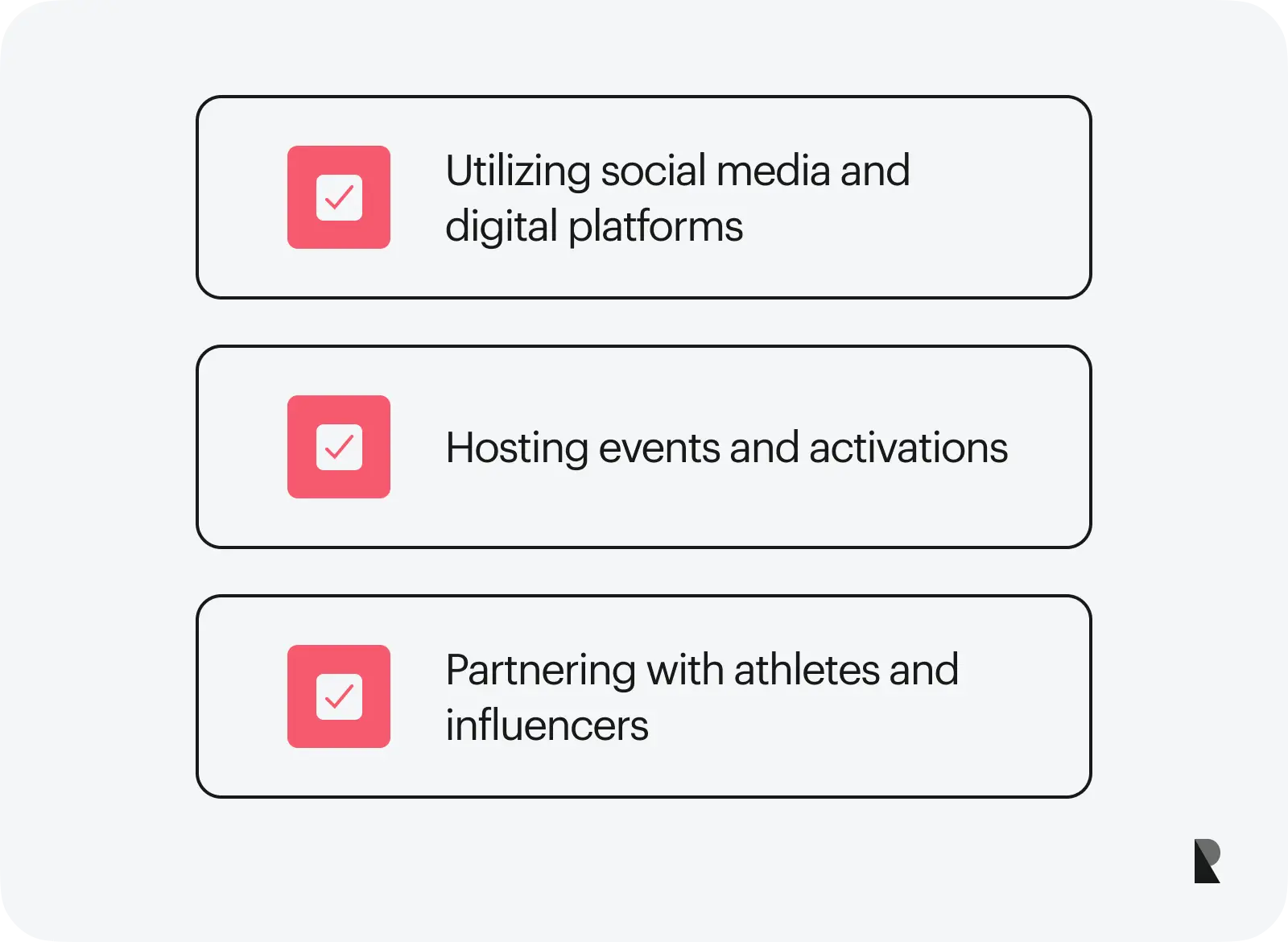
Take notes from the experts as we explore tried-and-tested tips from successful sports branding campaigns.
Utilizing Social Media and Digital Platforms
If you're looking for a cost-effective way to reach your audience and make an impact, look no further than social media platforms. In addition to having billions of users at your fingertips, social media and digital marketing have the highest return on investment (ROI) at an average rate of 95 percent.
Not to mention, social media and digital platforms cater to every content format for various audiences. Share exciting videos, start a competition online, show behind-the-scene clips, and encourage your followers to post photos. You can also leverage branded hashtags so fans can join the conversations and share their experiences.
These platforms have robust tools that brands can use to monitor, engage with, and boost the performance of their campaigns. You also have access to actual data that you can use to amplify results.
Check out how shoe brand Puma used social media for its 50th anniversary campaign.
Puma Suede 50th Anniversary Campaign
Puma Suede has catapulted the brand from just a sports brand to a lifestyle brand. Using suede fabric paved the way for non-conventional designs that transcended time. It made producing shoes in hundreds of colors easier and gave a luxurious feel. Soon, big icons in sports, hip-hop, and b-boy crews were sporting Puma Suede.
Celebrating its 50th anniversary in 2016, Puma released 37 limited-edition Suedes and partnered with industry giants in music, fashion, and culture worldwide as part of its Suede Forever campaign. Some include Karl Lagerfeld, MCM, and—wait for it—Hello Kitty!
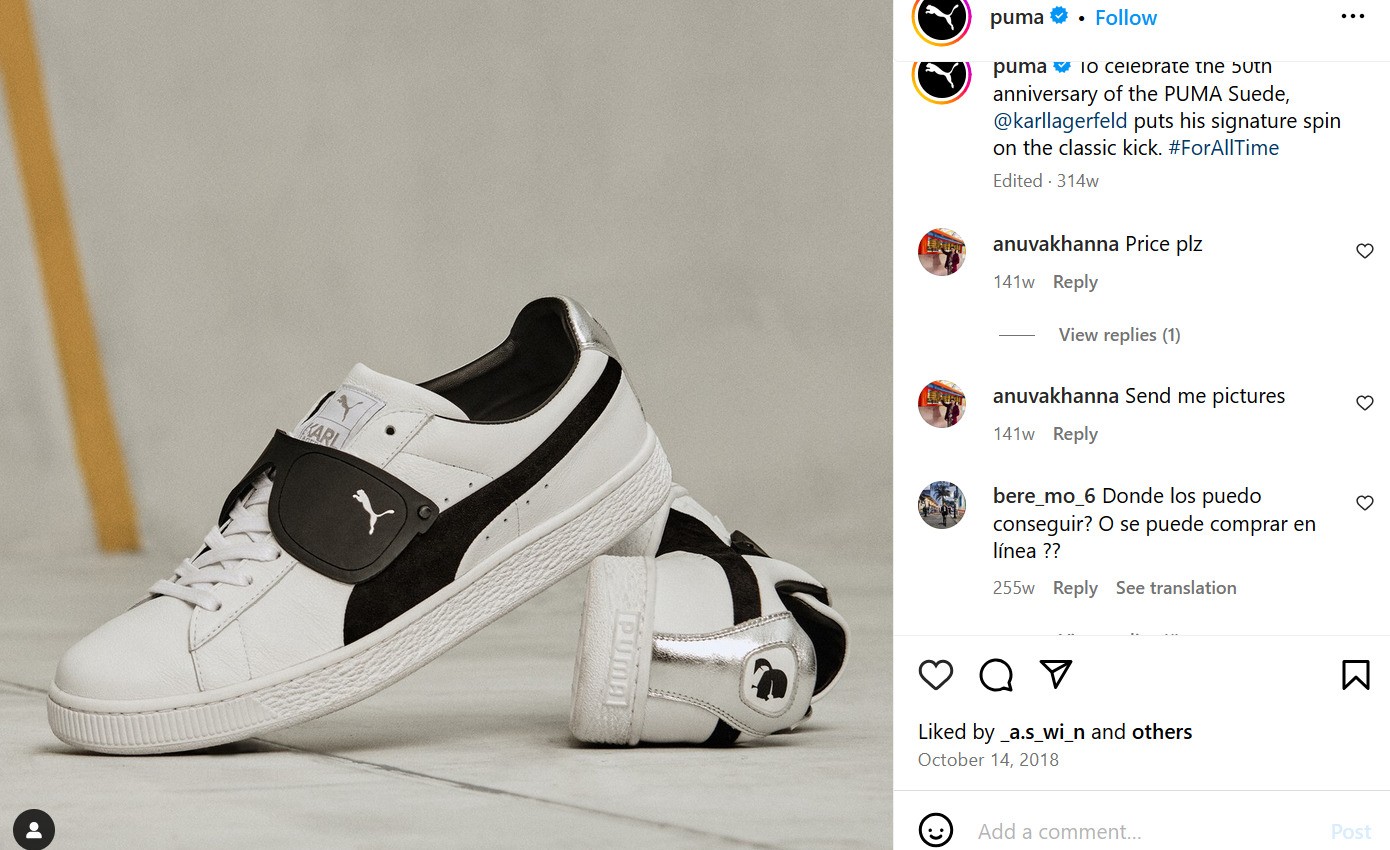
Puma Suede x Karl Lagerfeld collaboration. Image via Instagram
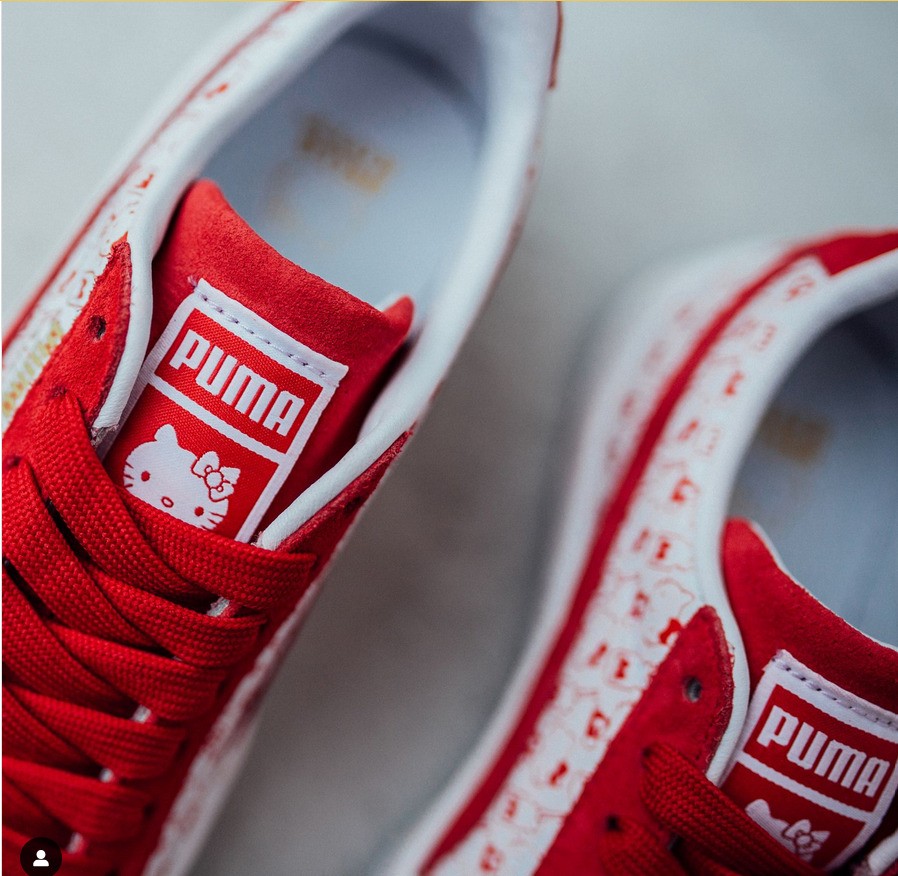
Puma x Hello Kitty collaboration. Image via Instagram
The brand heavily relied on paid ads, cross-promotions with partners, and other engaging content on social media to spread the word. Influencers also made unboxing videos of the newly released Puma Suedes. These types of content gained thousands of views and shares on Facebook and YouTube.
Hosting Events and Activations
You can rely on events and public activations when connecting with your audience in person. With countless digital platforms and advanced technology, you have various ways to create a memorable and buzz-worthy event!
Let's look at how the NFL (National Football League) and Adidas applied this strategy.
NFL Fan Experience
If one football event has gained popularity in the US and internationally, it's the NFL Super Bowl. It's an annual event where the best American football teams play against each other for the coveted trophy. In addition to garnering millions of views worldwide, the event is graced by well-known celebrities. No wonder brands fight for ad spots for the much-anticipated exposure.
The SoFi stadium in Los Angeles opened in 2020. However, with minimal in-person social interactions to curb the spread of the COVID-19 virus, the NFL had to improvise to provide the most coveted fan experience.
The brand fitted the stadium with dozens of selfie kiosks or booths where fans could take photos with their favorite sports team or football club while touring the place. These kiosks allowed fans to pick their players and position them however they wanted. They could also do a tunnel run with photos, responsive lighting, and a smoke effect!
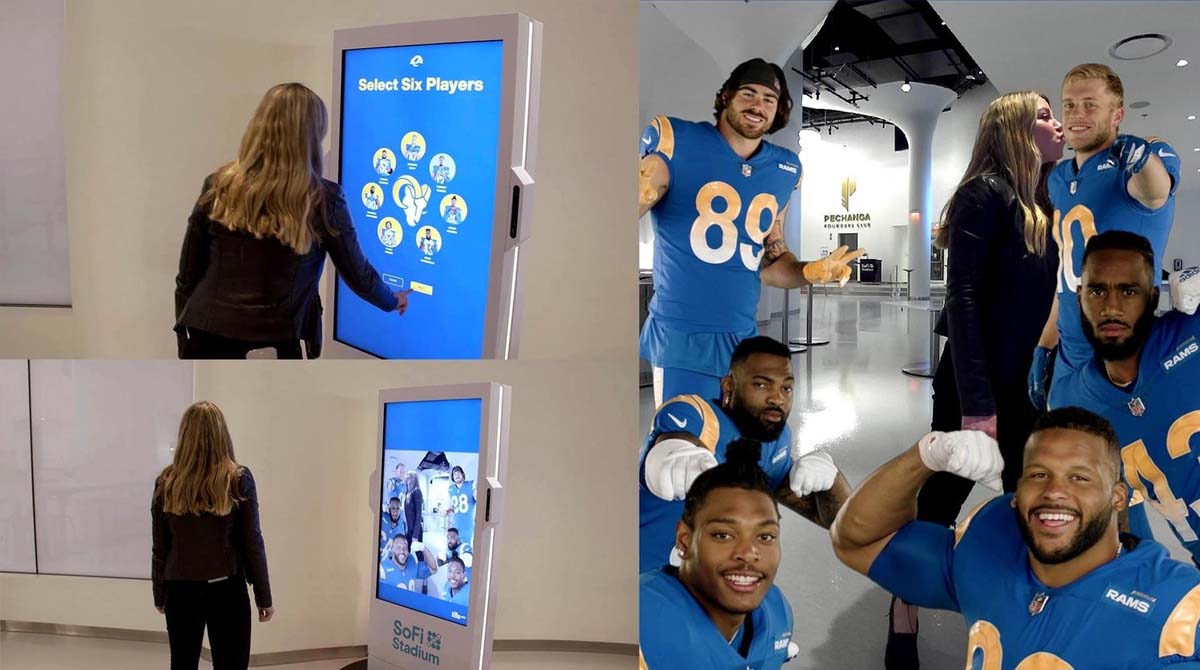
Despite social restrictions in 2020, the NFL didn't fail to deliver the ultimate fan experience using advanced technology. Image via Bridgewater Studio
The activation campaign strengthened the connection between the NFL players and their fans and captured memories they can keep forever.
Adidas D Rose Jump Store
Known for expensive ad campaigns, Adidas took a different approach by going guerrilla in launching Chicago Bulls player Derrick Rose's signature shoes. The brand hosted a pop-up event in the United Kingdom where free pairs of shoes were to be given away to the fans.
Here's the catch: You can only get a pair if you can jump and grab them off a 10-foot-high shelf, and you have only 24 seconds to do so.
Was the campaign a success?
Yes, it was. They were intrigued and challenged; over 2,000 Adidas and basketball fans lined outside the pop-up store. Several videos of the event also went viral, garnering over 300,000 views and making four million impressions online.
Running events and activations need not be expensive. Startups and small businesses can participate in community events alongside other entrepreneurs. You can also have kiosk stands at the plaza on weekends. Otherwise, virtual events are a great option.
Partnering with Athletes and Influencers
Today's consumers are more picky than ever. Celebrities and gimmicks do not easily sway them. More and more people rely on the feedback of their family, friends, and favorite influencers, with more than 70 percent of Gen Z and millennials following an influencer online.
In effect, influencer marketing has become a must-have in every branding strategy. Data shows that a business earns an average of six dollars for every dollar spent on influencers.
Choosing athletes and influencers as your sports brand ambassadors doesn't solely rely on their popularity online, though. You must also ensure that their values and personality align with your brand. They need to be a source of inspiration and motivation. Remember that millennials and Gen Zs are more likely to support transparent and authentic brands that align with their beliefs and social causes.
Wilson Sporting Goods x Serena Williams Collaboration
Banking on Serena Williams's expertise and popularity, Wilson Sporting Goods collaborated with the athlete to release the tennis rackets she designed. One of its unique features is Serena's autograph, which excites tennis fans to purchase the limited-edition product.
The brand shares, "She has always had aggressive goals for her career, and therefore, she is ever-willing to try new technologies that can complement her on court and give her an edge."
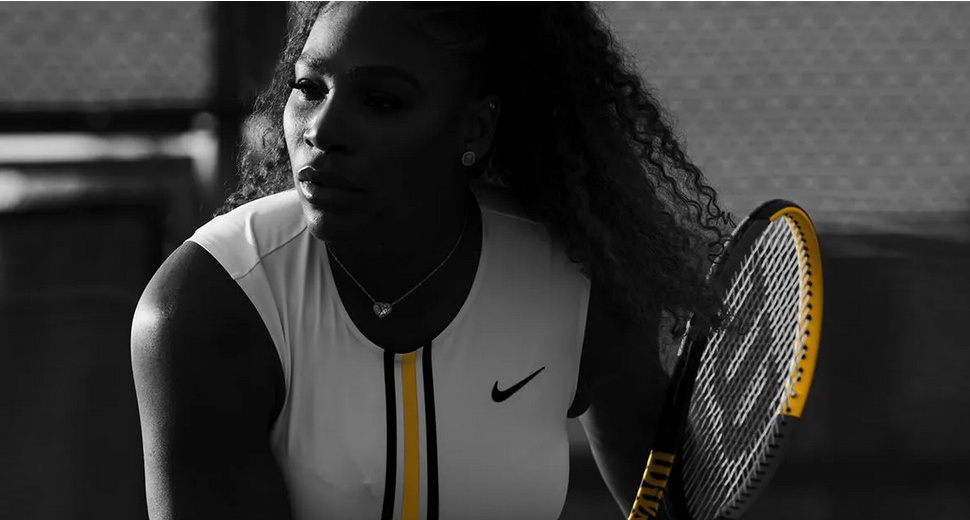
Serena Williams released her limited-edition autographed Wilson racket. Image via Wilson
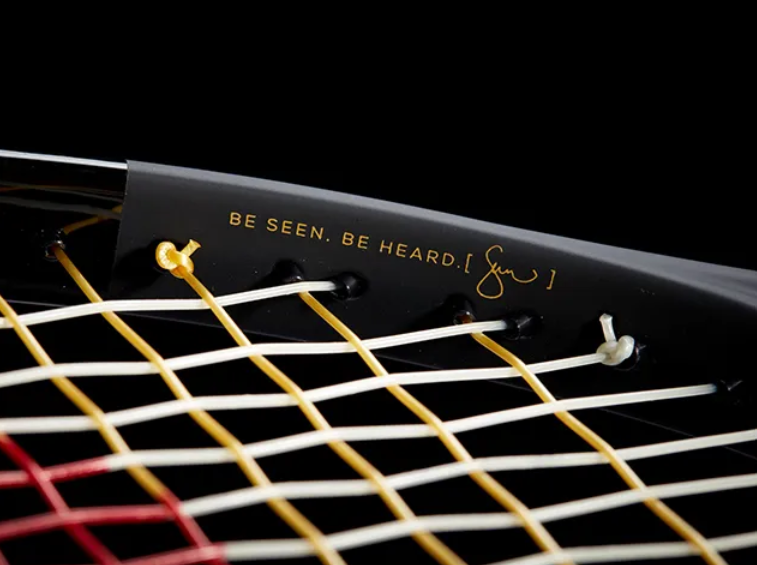
Serena Williams delighted fans with her autographed Wilson racket. Image via Wilson
But not everyone can afford to partner with an athlete like Wilson Sporting Goods. Enter the influencers.
Lululemon Affiliates and Creators Program
By partnering with local influencers, small fitness and yoga instructors, or coaches, the brand continues to build a deeper connection with its local communities. Through these influencers, Lululemon effectively targets niche markets that trust their recommendations.
In effect, it's easier for the brand to introduce new products and create a premium brand image that prioritizes quality and innovation.

Lululemon invites fitness coaches and yoga instructors to be global brand ambassadors. Image via Lululemon
As the brand grew, it created a program that encouraged genuine support. Brand ambassadors and advocates are not rewarded in cash but through free products, classes, event participation, etc. This grassroots and multi-tiered approach allows Lululemon to connect with and enrich the lives of its broad audience while fostering a sense of community.
Measuring the Success of a Sports Branding Strategy
So, you've planned and implemented your sports team branding strategy. But is it working?
There is no single formula to gauge the success of your brand strategy. However, with your branding goals in mind, you can monitor several metrics and measure their performance to see where you stand.
1. Brand Awareness
Increasing brand awareness is a sign that you're reaching your intended audience and leaving a mark in their minds. One way to track it is by monitoring website and social media traffic, which also looks into unique page views, average session duration, and time on a web page.
Another indicator is your Share of Voice, which measures the level of brand awareness your company has across different channels compared to other brands. Knowing your Share of Voice is vital because it can help you discover ways to improve your brand's visibility.
2. Customer Engagement
One of the top indicators of healthy customer engagement is a steady rise in converted leads. These potential clients have moved forward in the customer journey or purchased products and services from your brand. Generally, brands should aim for at least a two to five percent conversion rate. But this figure may vary depending on your industry, market conditions, etc.
You can leverage data and insight tools to see if your social media content is gaining traction. You can also ask your audience for feedback regarding customer engagement directly through surveys, interviews, chat support, and in-store conversations.
3. Market Share
Market share is the share in revenue of a brand within a particular segment. It is calculated with the following formula:
Market Share = (Business revenue/Total industry revenue) x 100
For instance, if the total industry sales is $10 million and the total sales of your sports brand is $2 million, then your market share is 20 percent. Companies with a healthy market share enjoy an excellent reputation within the industry, making them trusted brands among consumers. It also gives them higher pricing power, enabling them to influence the supply and demand of goods and services.
Other metrics to consider when measuring your sports branding strategy are sales and revenue, sponsorship and partnership deals, and brand loyalty.
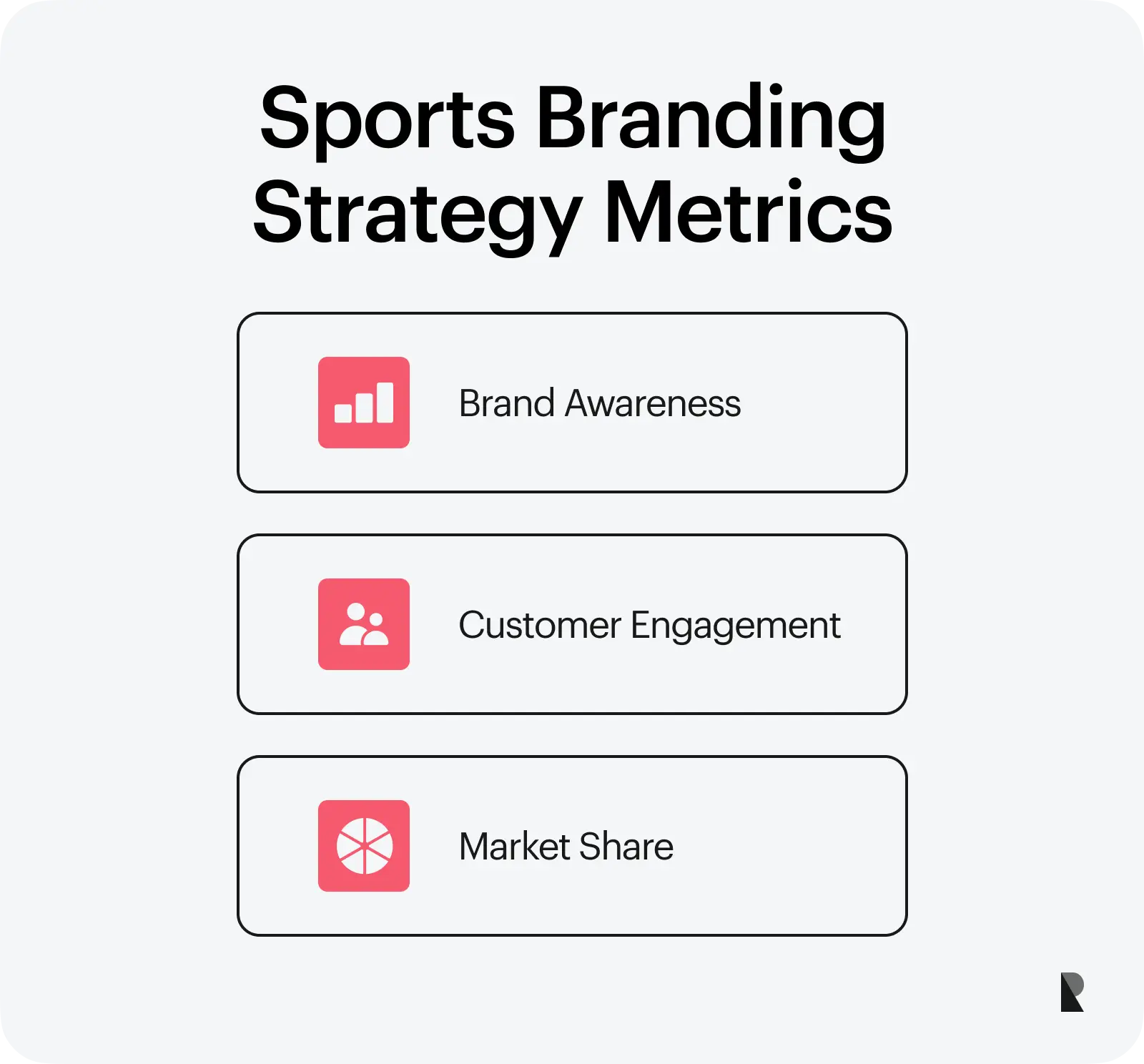
The Final Point
The sports industry has undergone a massive transformation in the past few years.
We have seen how sports brands quickly integrated advanced technology, like AI, and branding techniques to broaden reach, improve the brand experience, and meet the fans' and customers' demands while overcoming the pandemic slump. Professional sports athletes have also become more socially conscious and active as they recognize their impact on society.
As the sports industry continues to strengthen and consumers have become more active participants, sports brands and teams can expect a tighter race to the top. You have to stay on your toes.
Whether you're looking to design a new logo, undergo total rebranding, or need help strengthening your sports branding and marketing, you’ll need a reliable branding company on your team. Let's map out your strategy to success and become a well-established brand.
Oct 29, 2024
